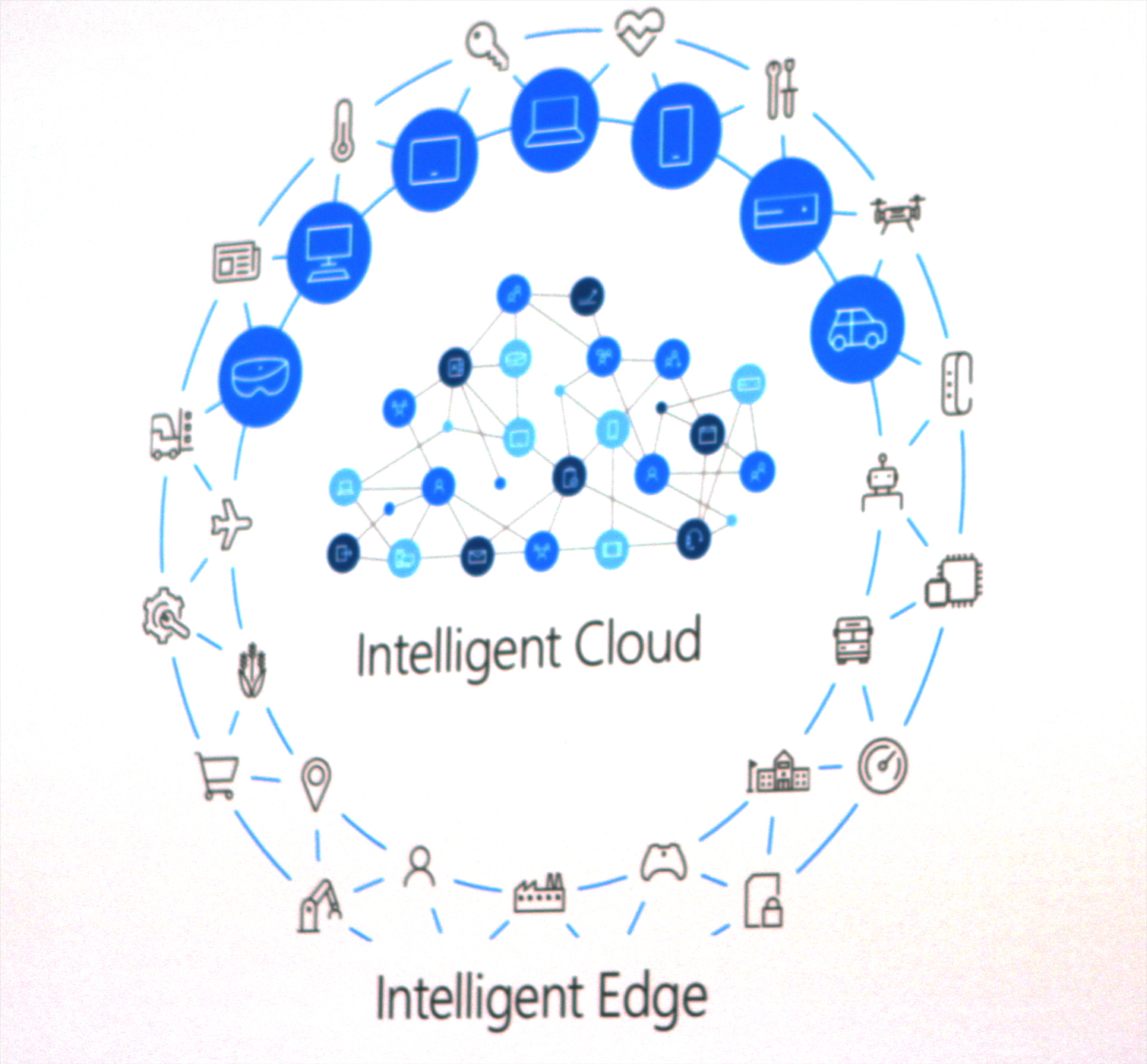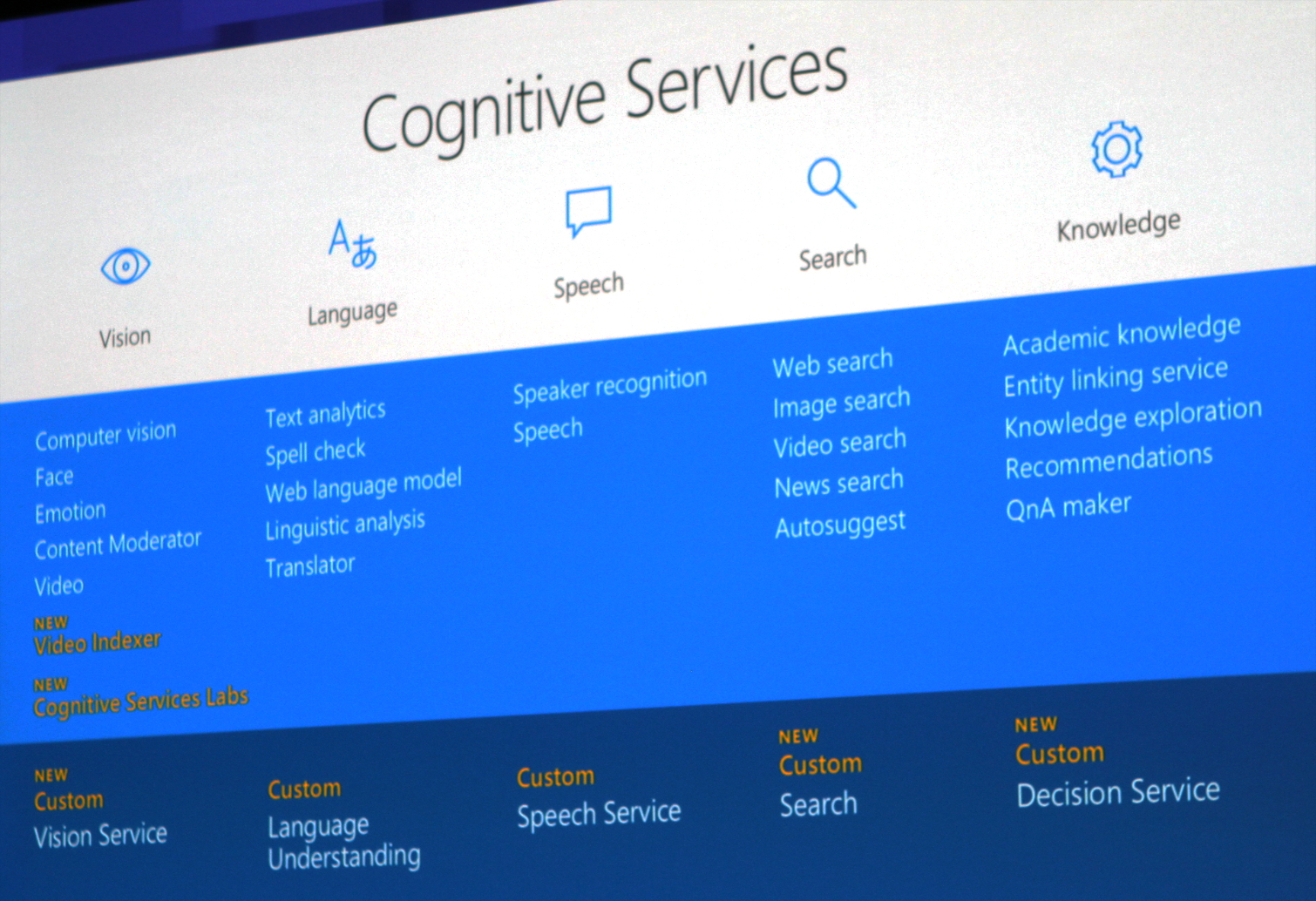Microsoft Doubles Down On AI
At its Build developer conference, Microsoft launched multiple AI-powered tools that will help developers enhance their own products and services. "AI is everywhere," proclaimed Microsoft CEO Satya Nadella from the stage as he elaborated on a changing landscape.
Rapid Rise Of AI
Nadella continued, "Even analytics in the cloud is pointing to a fundamental change in the paradigm for the apps we’re building, a change in the worldview that we have. We’re moving from a mobile-first, cloud-first world to a world that’s made up of an intelligent cloud and an intelligent edge." He noted that the training component of AI couldn't all be done in the cloud; it must also happens on the edge in a number of devices. This will involve serverless computing and, Nadella said, change the core of distributed computing.
"Intelligent cloud, intelligent edge." Those are the watchwords. Everything Microsoft is driving towards is guided by that.
The fast growth and investment in AI has surprised many in the technology industry, including Microsoft. The company said that up until a few years ago, it was hard to think of any tool that used AI, and in a few years more it will be hard to imagine any technology that isn’t assisted by AI in some form.
For a long time, developers have used software algorithms to perform certain tasks. When Microsoft uses the term “AI,” it seems to refer mainly to “deep learning,” or using neural networks with hundreds or more layers that teach themselves and no longer require specific algorithms.
For instance, instead of using developers to program the specific algorithms required to do accurate image recognition, a neural network could identify objects on its own much more accurately by learning from large data sets and creating its own patterns and rules for identifying certain classes of objects.
According to Microsoft, three factors contributed to this rapid adoption of AI: increased computing power in the cloud, deep neural networks, and access to massive amounts of data.
Get Tom's Hardware's best news and in-depth reviews, straight to your inbox.
Microsoft believes that it’s now in a strong position to take advantage of all of these factors, due to its Azure cloud and some popular products and services, such as Windows, Outlook, and Office 365.
Microsoft Cognitive Services
Developers can now use 29 "Cognitive Services" to build apps that recognize gestures, translate text in multiple languages, analyze and edit video content, and customize data to recognize images in categories that are most important to customers.
From the Build stage, Microsoft's Harry Shum reminded the audience how just a couple of years ago, Microsoft Cognitive Services launched with just four APIs (and that launch was in a back room somewhere in front of a tiny crowd). Last year, there were 22 APIs. This year, there are even more, and, he joked, he finally made it to the main stage.
There are three broad components to Microsoft's Cognitive Services: "big compute," powerful algorithms, and massive amounts of data. To serve those three areas, Microsoft provides the cloud (Azure), "breakthrough AI algorithms" from Microsoft Research and the Microsoft Graph.
The Microsoft Graph has changed. Now it includes three components: devices, people, and activities.
What that means, according to Microsoft, is that if you build something for meetings, you need a new programming model abstraction that lets you think about everything that spans an intelligent meeting. In a demo, Microsoft's Laura Jones walked the audience through a scenario in which she starts her day at her house, preps for a meeting, and then has a meeting.
She asked Cortana--which was connected to a speaker, a la Amazon's Alexa--what her day looked like. Cortana rattled off her meeting schedule, suggested she allow extra commute time to fill up her low gas tank, and noted that she had a notification from Expedia. The Expedia bit concerned Jones' upcoming vacation, so she asked Cortana to set her out of office email reply.
Jones stated that she could have had those same notifications pushed to any of her devices--her Xbox, her car, etc. And then, she "left" her "house," jumped in her "car" (a kind of silly facsimile that was parked onstage), and then she (pretended to) drive off to work. When she was in the car, Cortana knew where she was and adjusted its advice based on the context. For example, it told Jones that there was an accident, so she pinged her team (via Microsoft Teams) to let them know she'd be late. She could also just join the meeting remotely via Teams.
It didn't matter what device Jones was using or where she was; Cortana adjusted based on the device Jones was using and what situation she was in. You get the idea. Intelligent cloud, intelligent edge.
Microsoft Cognitive Services covers vision, language, speech, search, and all manner of knowledge. Now, it has a Video Indexer, as well as a spate of custom services. The idea there is that by giving developers more control, they can better create tools that are ideal for their business or application. The new services include Bing Custom Search, Custom Vision Service, Custom Decision Service, Custom Language Understanding, and Custom Speech Service. Microsoft also launched the Cognitive Services Labs, which allow developers to participate in the AI research community to better understand the future of AI.
Microsoft claimed that its Cognitive Services platform is the broadest in the industry and that the company is the only major provider to offer customization across all the key cognitive areas.
Microsoft Bot Framework
Since its introduction last year, the Microsoft Bot Framework has attracted over 130,000 developers who used it to build apps. At Build, Microsoft announced Adaptive Cards, which let developers create cards that work across multiple apps and platforms.
Developers can now also publish to different channels including Skype for Business, Bing, and Cortana, and implement Microsoft’s payment request API for easy checkout with the bots.
Azure Batch AI Training
Microsoft also announced a private preview of a new service called Azure Batch AI training, which developers can use to train their models. Developers can also use a machine learning framework of their choice--TensorFlow, Caffe, or the Microsoft Cognitive Toolkit.
AI-Assisted Office Software
Last year, Microsoft announced that it would enhance Office 365 with AI capabilities, which should make it easier for users to create their documents, spreadsheets, and presentations.
At Build, Microsoft announced a new Presentation API for Office 365, which does real-time translation in multiple languages during any PowerPoint presentation. Once final, the Presentation Translator embeds live transcriptions of the presenter into a specific language and even generates a unique link that attendees can access to receive real-time translations of the presentation.
Microsoft Graph
Powerful AI tools aren’t of much use without data, so at Build, the company emphasized its Graph service, which allows its enterprise customers to analyze data in their organizations and train AI models based on it.
Microsoft also announced that it partnered with Tact, the “sales experience platform.” Many of its services, including Dynamics 365, Office 365, Microsoft Teams, Cortana Skills, Microsoft Graph, and Sentiment Analysis, will be integrated into Tact’s AI-powered virtual sales assistant later this year.
Microsoft is showing that it’s taking AI seriously by aggressively enhancing its services with AI capabilities. This could prove a successful strategy, especially if its Azure cloud customers can take advantage of these new tools to offer better services to their own customers, thus providing more value for everyone involved.
Lucian Armasu is a Contributing Writer for Tom's Hardware US. He covers software news and the issues surrounding privacy and security.
-
They built intelligent tools on spying people, taking their data and selling it to others...no thanks.Reply
-
chulak @FREAK777POWER You are not very bright are you? Did you read the article? What is your comments connection to AI?Reply -
nekromobo Outlook has stopped responding. AI first, user last. I wish they made more stable products :( (using O365 with W10, both latest btw)Reply -
LyleS43 All the Microsofties, from Nadella on down, are smoking the same joint, telling each other how great their ideas are, and then using their monopoly position to shove the results down our throats (or elsewhere). When was the last time you were asked about your computing needs by Microsoft?Reply




